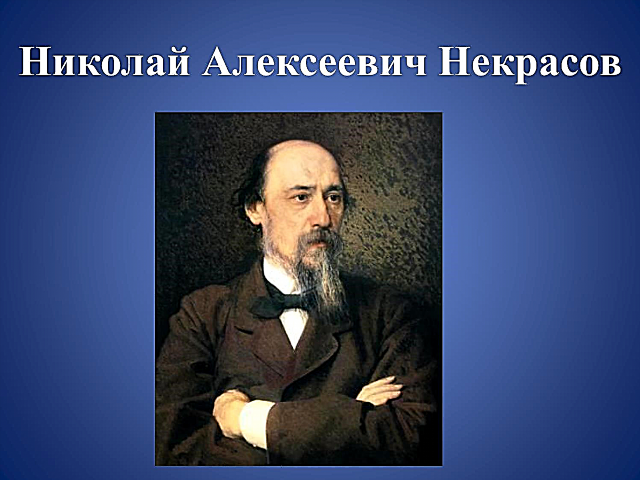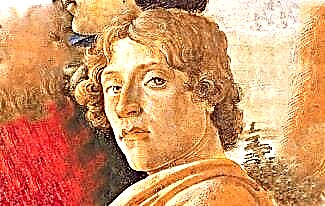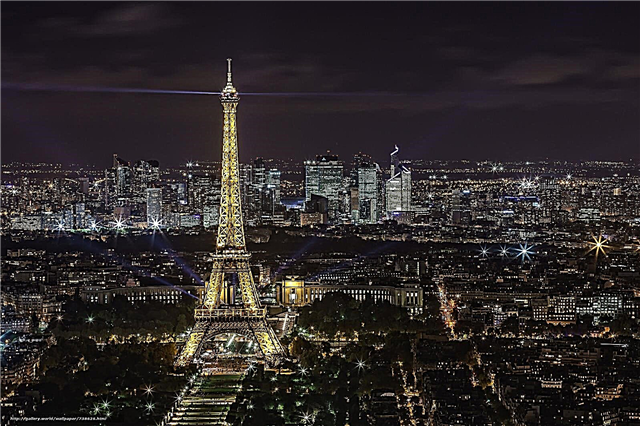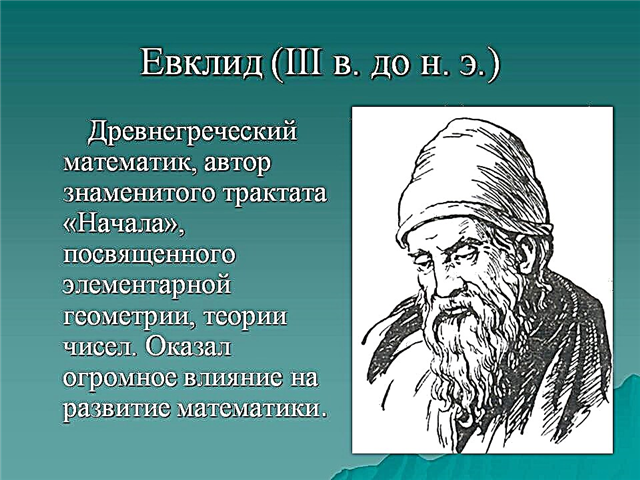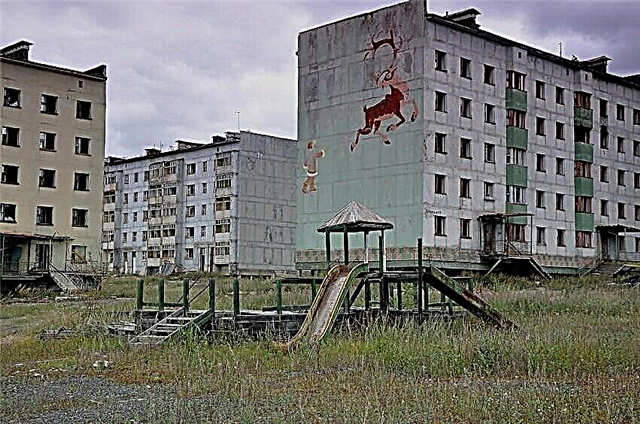Blaise Pascal (1623-1662) - an outstanding French mathematician, mechanic, physicist, writer and philosopher. The classic of French literature, one of the founders of mathematical analysis, probability theory and projective geometry, the creator of the first samples of calculating technology, the author of the fundamental law of hydrostatics.
Pascal is an amazingly versatile genius. Having lived only 39 years, most of which he was seriously ill, he managed to leave a significant mark in science and literature. His unique ability to penetrate the very essence of things allowed him not only to become one of the greatest scientists of all time, but also helped to capture his thoughts in the immortal literary creations.
In them, Pascal anticipated a number of ideas from Leibniz, P. Beil, Rousseau, Helvetius, Kant, Schopenhauer, Scheler and many others.

In honor of Pascal are named:
- crater on the moon;
- unit of measurement of pressure and stress (in mechanics) in the SI system;
- Pascal programming language.
- One of two universities in Clermont-Ferrand.
- Annual French Science Prize.
- The architecture of the GeForce 10 graphics cards, developed by Nvidia.
Pascal's turn from science to the Christian religion happened suddenly, and according to the description of the scientist himself - through a supernatural experience. This was perhaps an unprecedented event in history. At least when it comes to scientists of this magnitude.
Pascal's biography
Blaise Pascal was born in the French city of Clermont-Ferrand in the family of the chairman of the tax office, Etienne Pascal.
He had two sisters: the youngest, Jacqueline, and the eldest, Gilberte. Mother died when Blaise was 3 years old. In 1631 the family moved to Paris.
Childhood and youth
Blaise grew up as an extremely gifted child. His father, Etienne, educated the boy independently; at the same time, he himself was well versed in mathematics: he discovered and investigated an previously unknown algebraic curve, called "Pascal's snail", and was also a member of the commission for determining longitude, created by Cardinal Richelieu.
Pascal's father had a clear plan for the intellectual development of his son. He believed that from the age of 12 Blaise should study ancient languages, and from 15 - mathematics.
Realizing that mathematics has the ability to fill and satisfy the mind, he did not want Blaise to get to know her, fearing that this would make him neglect Latin and other languages in which he wanted to improve him. Seeing the child's extremely strong interest in mathematics, he hid the books on geometry from him.
However, Blaise, remaining at home alone, began to draw various figures on the floor with coal and study them. Not knowing geometric terms, he called the line a "stick" and a circle a "ringlet".

When Blaise's father accidentally caught one of these independent lessons, he was shocked: the young genius, passing from one proof to another, had advanced so far in his research that he reached the thirty-second theorem of the first book of Euclid.
“One can therefore say without any exaggeration,” wrote the famous Russian scientist MM Filippov, “that Pascal reinvented the geometry of the ancients, created by entire generations of Egyptian and Greek scientists. This fact is unparalleled even in the biographies of the greatest mathematicians. "
On the advice of his friend, Etienne Pascal, appalled by Blaise's extraordinary talent, abandoned his original curriculum and allowed his son to read math books.
During his leisure hours, Blaise studied Euclidean geometry, and later, with the help of his father, moved on to the works of Archimedes, Apollonius, Pappus of Alexandria and Desargues.
In 1634, when Blaise was only 11 years old, someone at the dinner table stabbed a faience dish with a knife, which immediately began to sound. The boy noticed that as soon as he touched the dish with his finger, the sound disappeared. To find an explanation for this, young Pascal conducted a series of experiments, the results of which were later presented in the "Treatise on Sounds."
From the age of 14, Pascal participated in the weekly seminars of the then famous mathematician Mersenne, held on Thursdays. Here he met the outstanding French geometer Desargues. Young Pascal was one of the few who studied his works, written in a complex language.

In 1640, the first printed work of the 17-year-old Pascal was published - "An Experiment on Conical Sections", a masterpiece that entered the golden fund of mathematics.
In January 1640, Pascal's family moved to Rouen. During these years, Pascal's health, already unimportant, began to deteriorate. Nevertheless, he continued to work actively.
Pascal's machine
Here we should dwell on one interesting episode of Pascal's biography. The fact is that Blaise, like all extraordinary minds, turned his intellectual gaze on literally everything that surrounded him.
During this period of his life, Blaise's father, as a quartermaster in Normandy, often engaged in tedious calculations in the distribution of taxes, duties and taxes.
Seeing how his father was working with traditional methods of computing and finding them inconvenient, Pascal conceived the idea of creating a computing device that could greatly simplify the calculations.
In 1642, 19-year-old Blaise Pascal began the creation of his "Pascaline" summing machine, in this, by his own admission, he was helped by the knowledge gained in his early years.

Pascal's machine, which became the prototype of the calculator, looked like a box filled with numerous gears connected to each other, and performed calculations with six-digit numbers. To ensure the accuracy of his invention, Pascal was personally present during the manufacture of all its components.
French Archimedes
Soon Pascal's car was forged in Rouen by a watchmaker who did not see the original and built a copy, guided only by stories about Pascal's "counting wheel". Despite the fact that the fake machine was completely unsuitable for performing mathematical operations, Pascal, hurt by this story, left work on his invention.
To encourage him to continue improving the machine, his friends drew the attention of one of the highest-ranking officials in France - Chancellor Seguier. He, having studied the project, advised Pascal not to stop there. In 1645, Pascal presented Seguier with a finished model of the car, and after 4 years he received the royal privilege for his invention.
The principle of coupled wheels invented by Pascal for almost three centuries became the basis for the creation of most adding machines, and the inventor himself began to be called the French Archimedes.
Getting to know Jansenism
In 1646, the Pascal family, through the doctors who treated Etienne, became acquainted with Jansenism, a religious movement in the Catholic Church.
Blaise, having studied the treatise of the famous Dutch bishop Jansenius "On the transformation of the inner man" with criticism of the pursuit of "greatness, knowledge and pleasure," is in doubt: is his scientific research a sinful and godly pursuit? Of the whole family, it is he who is most deeply imbued with the ideas of Jansenism, experiencing his "first conversion".
However, he has not left his studies in science so far. One way or another, but it is this event that will completely change his life in the near future.
Experiments with the Torricelli pipe
At the end of 1646, Pascal, having learned from an acquaintance of his father about the Torricelli pipe, repeated the experience of the Italian scientist. Then he made a series of modified experiments, trying to prove that the space in the tube above the mercury is not filled with its vapors, or rarefied air, or some kind of "fine matter".
In 1647, already in Paris and, despite the aggravated illness, Pascal published the results of his experiments in the treatise "New Experiments Concerning Emptiness".

In the final part of his work, Pascal argued that the space at the top of the tube "Is not filled with any substances known in nature ... and this space can be considered really empty, until the existence of any substance there is experimentally proven."... This was preliminary proof of the possibility of emptiness and that Aristotle's hypothesis of "fear of emptiness" has limits.
Having proved the existence of atmospheric pressure, Blaise Pascal refuted one of the basic axioms of old physics and established the basic law of hydrostatics. Various hydraulic devices operate on the basis of Pascal's law: brake systems, hydraulic presses, etc.
"Secular period" in the biography of Pascal
In 1651, Pascal's father dies, and his younger sister, Jacqueline, leaves for the Port-Royal monastery. Blaise, who had previously supported his sister in her pursuit of monastic life, fearing now to lose her only friend and helper, asked Jacqueline not to leave him. However, she remained adamant.
Pascal's habitual life ended, and serious changes took place in his biography. Moreover, to all the troubles was added the fact that his health condition has significantly deteriorated.
It was then that doctors instruct the scientist to reduce mental stress and spend more time in a secular society.

In the spring of 1652, in the Lesser Luxembourg Palace, at the Duchess d'Aiguillon's, Pascal demonstrated his arithmetic machine and set up physical experiments, earning general admiration. During this period of biography, Blaise strikes up secular relations with prominent representatives of French society. Everyone wants to be closer to the brilliant scientist, whose fame has grown far beyond France.
It was then that Pascal experienced a revival of interest in research and the desire for fame, which he suppressed under the influence of the teachings of the Jansenists.
The closest of the aristocratic friends for the scientist was the Duke de Roanne, who was fond of mathematics. In the duke's house, where Pascal lived for a long time, he was assigned a special room. Reflections based on the observations made by Pascal in secular society later became part of his unique philosophical work "Thoughts".
An interesting fact is that gambling, popular at that time, led to the fact that in the correspondence of Pascal with Fermat, the foundations of the theory of probability were laid. Scientists, solving the problem of the distribution of bets between players with an interrupted series of games, used each of their own analytical methods for calculating probabilities, and came to the same result.
It was then that Pascal created a "Treatise on the Arithmetic Triangle", and in a letter to the Paris Academy informs that he was preparing a fundamental work entitled "The Mathematics of Chance".
Pascal's "second appeal"
On the night of November 23-24, 1654, “from ten and a half in the evening to half past midnight,” Pascal, according to him, experienced a mystical enlightenment from above.
When he came to, he immediately rewrote the thoughts he had sketched on the draft onto a piece of parchment that he sewed into the lining of his clothes. With this relic, what his biographers will call "Pascal's Memorial", he did not part until his death. Read the text of the Pascal Memorial here.
This event radically changed his life. Pascal did not even tell his sister Jacqueline about what had happened, but asked the head of Port-Royal Antoine Senglen to become his confessor, cut off secular ties and left Paris.
First, he lives in the castle of Vaumurier with the Duke de Luin, then, in search of solitude, he moves to the suburban Port-Royal. He completely stops doing science. Despite the harsh regime followed by the hermits of Port-Royal, Pascal feels a significant improvement in his health and is experiencing a spiritual upsurge.
From now on, he becomes an apologist for Jansenism and devotes all his strength to literature, directing his pen to defend "eternal values." At the same time he was preparing for the "small schools" of Jansenists a textbook "Elements of Geometry" with the appendices "On the Mathematical Mind" and "The Art of Persuading.
"Letters to the Provincial"
The spiritual leader of Port-Royal was one of the most educated people of that time, Doctor of the Sorbonne Antoine Arnault. At his request, Pascal became involved in the Jansenist polemic with the Jesuits and created Letters to the Provincial, a brilliant example of French literature containing fierce criticism of the order and the propaganda of moral values set forth in the spirit of rationalism.
Starting with a discussion of the dogmatic differences between the Jansenists and the Jesuits, Pascal moved on to condemn the latter's moral theology. Not allowing the transition to personalities, he condemned the casuistry of the Jesuits, leading, in his opinion, to the fall of human morality.
The Letters were published in 1656-1657. under a pseudonym and caused a considerable scandal. Voltaire wrote: “There have been many attempts to portray the Jesuits as disgusting; but Pascal did more: he showed them ridiculous and ridiculous. "
Of course, after the publication of this work, the scientist risked falling into the Bastille, and he had to hide for some time. He often changed his place of residence and lived under a false name.
Cycloid research
Having abandoned systematic studies in science, Pascal, nevertheless, occasionally discussed mathematical questions with friends, although he did not intend to engage in scientific work anymore.
The only exception was basic research on cycloid (according to friends, he took up this problem to distract from toothache).
In one night, Pascal solves the Mersenne problem on the cycloid and makes a unique set of discoveries in its study. At first he was reluctant to publicize his findings. But his friend the Duke de Roanne proposed to arrange a competition for solving cycloid problems among the greatest mathematicians of Europe. Many renowned scientists participated in the competition: Wallis, Huygens, Rehn and others.
For a year and a half, scientists have been preparing their research. As a result, the jury recognized Pascal's solutions, found by him in just a few days of acute toothache, as the best, and the method of infinitesimal that he used in his works further influenced the creation of differential and integral calculus.
"Thoughts"
As early as 1652, Pascal planned to create a fundamental work - "The Apology of the Christian Religion." One of the main goals of "Apology ..." was to be a criticism of atheism and the defense of faith.
He constantly reflected on the problems of religion, and his plan changed over time, but various circumstances prevented him from starting to work on the work, which he conceived as the main work of life.

Beginning in the middle of 1657, Pascal made fragmentary records of his thoughts on separate sheets, categorizing them by topic.
Realizing the fundamental significance of his idea, Pascal allotted himself ten years to create this work. However, illness prevented him: from the beginning of 1659, he made only fragmentary notes.
Doctors forbade him any mental stress and hid paper and ink from him, but the patient managed to write down everything that came into his head, literally on any material at hand. Later, when he could no longer even dictate, he stopped working.
About a thousand excerpts have survived, differing in genre, volume and degree of completeness. They were deciphered and published in a book entitled "Thoughts on Religion and Other Subjects", then the book was simply called "Thoughts".
They are mainly devoted to the meaning of life, the purpose of man, as well as the relationship between God and man.
What kind of chimera is this man? What a marvel, what a monster, what chaos, what a field of contradictions, what a miracle! The judge of all things, a senseless earth worm, the keeper of truth, a cesspool of doubts and mistakes, the glory and rubbish of the universe.
Blaise Pascal, Thoughts
"Thoughts" entered the classics of French literature, and Pascal became the only great writer in modern history and a great mathematician at the same time.
Read Pascal's selected thoughts here.
Last years
Since 1658, Pascal's health deteriorated rapidly. According to modern data, during his short life, Pascal suffered from a whole complex of serious diseases: a malignant brain tumor, intestinal tuberculosis and rheumatism. He is overcome by physical weakness, and regularly suffers from terrible headaches.
Huygens, who visited Pascal in 1660, found him a very old man, despite the fact that at that time Pascal was only 37 years old. Pascal realizes that he will soon die, but does not feel fear of death, telling his sister Gilberte that death takes away from a person "the unfortunate ability to sin."
Pascal's personality
Blaise Pascal was an extremely modest and unusually kind person, and his biography is full of examples of amazing sacrifice.
He endlessly loved the poor and always tried to help them even (and most often) to the detriment of himself. His friends recall:
“He never refused alms to anyone, although he himself was not rich and the expenses that his frequent ailments demanded exceeded his income. He always gave alms, denying himself what was needed. But when this was pointed out to him, especially when his spending on alms was very large, he was upset and told us: "I noticed that no matter how poor a person is, after his death there is always something left." Sometimes he went so far that he had to borrow for a living and borrow with interest in order to be able to give out to the poor everything he had; after that, he never wanted to resort to the help of friends, because he made it a rule to never consider other people's needs as burdensome for himself, but always beware of burdening others with his needs. "
In the fall of 1661, Pascal shared with the Duke de Roanne the idea of creating a cheap and accessible way of transportation for poor people in multi-seat carriages. The Duke appreciated Pascal's project, and a year later the first public transport route opened in Paris, later called the omnibus.

Shortly before his death, Blaise Pascal took into his home the family of a poor man who could not pay for housing. When one of the sons of this poor man fell ill with chickenpox, Pascal was advised to temporarily remove the sick boy from the house.
But Blaise, already seriously ill himself, said that the move was less dangerous for him than for the child, and asked to be better transported to his sister, although it cost him great difficulties.
Such was Pascal.
Death and memory
In October 1661, in the midst of a new round of persecution of the Jansenists, the sister of the great scientist, Jacqueline, dies. This was a hard blow for the scientist.
On August 19, 1662, after a painful long illness, Blaise Pascal died. He was buried in the parish church of Paris Saint-Etienne-du-Mont.
However, Pascal was not destined to remain in obscurity. Immediately after the death of the sieve of history, his legacy began to be sifted, an assessment of his life and work began, which is evident from the epitaph:
A husband who did not know his wife
In religion, holy, glorious by virtue,
Famous for scholarship,
Sharp mind ...
Who loved justice
Defender of truth ...
The cruel enemy who spoil Christian morality,
In whom rhetors love eloquence,
In whom writers recognize grace
In whom mathematicians admire depth
In whom philosophers seek wisdom,
In whom the doctors praise the theologian,
In whom the pious revere an ascetic,
Who everyone admires ... Who everyone should know.
How much, passerby, we lost in Pascal,
He was Ludovic Montalt.
Enough has been said, alas, tears come.
I'm silent ...
Two weeks after the death of Pascal, Nicolas said: “We can truly say that we have lost one of the greatest minds that ever existed. I don't see anyone with whom I could compare him: Pico della Mirandola and all these people admired by the light were fools around him ... The one we grieve for was the king in the kingdom of minds ... ".

